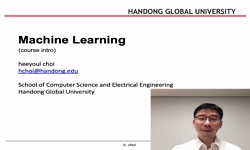This research presented the procedural framework of developing and optimizing an artificial intelligence model for predicting the change of bread texture by different baking enhancers. Emphasis was placed on the impact of various baking enhancers on t...
http://chineseinput.net/에서 pinyin(병음)방식으로 중국어를 변환할 수 있습니다.
변환된 중국어를 복사하여 사용하시면 됩니다.
- 中文 을 입력하시려면 zhongwen을 입력하시고 space를누르시면됩니다.
- 北京 을 입력하시려면 beijing을 입력하시고 space를 누르시면 됩니다.


제빵 개량제에 따른 식빵의 텍스처 예측을 위한 인공지능 모델 최적화 = Optimization of an Artificial Intelligence Model for Predicting the Texture of Bread With Different Baking Enhancers
한글로보기https://www.riss.kr/link?id=A109078315
- 저자
- 발행기관
- 학술지명
- 권호사항
-
발행연도
2024
-
작성언어
Korean
- 주제어
-
등재정보
KCI등재,SCOPUS
-
자료형태
학술저널
- 발행기관 URL
-
수록면
119-127(9쪽)
- 제공처
-
0
상세조회 -
0
다운로드
부가정보
다국어 초록 (Multilingual Abstract)
This research presented the procedural framework of developing and optimizing an artificial intelligence model for predicting the change of bread texture by different baking enhancers. Emphasis was placed on the impact of various baking enhancers on the Mixolab thermo-mechanical properties of wheat flour and consequent alterations in bread texture. The application of baking enhancers positively contributed to dough formation and stability, producing bread with a soft texture. However, a relatively low Pearson correlation coefficient was observed between a single Mixolab parameter and bread texture (r<0.59). To more ac curately predict the texture of bread from the thermo-mechanical features of wheat flour with baking enhancers, five AI models (multiple linear regression, decision tree, stochastic gradient descent, random forest, and multilayer perceptron neural network) were applied, and their prediction performance was compared. The multilayer perceptron neural network model was further utilized to enhance the prediction of bread texture by mitigating overfitting risks. Finally, the hyperparameter tuning (activa tion function [Leaky ReLU], regularization [0.0001], and dropout [0.1]) led to enhanced model performance (R2 = 0.8109 and RMSE = 0.1096).
동일학술지(권/호) 다른 논문
-
추출 용매에 따른 브로콜리와 양배추 추출물의 항산화 활성
- 한국산업식품공학회
- 전경학
- 2024
- KCI등재,SCOPUS
-
습식 및 건식 염장 전처리가 돈피 스낵의 품질특성에 미치는 영향
- 한국산업식품공학회
- 박신영
- 2024
- KCI등재,SCOPUS
-
- 한국산업식품공학회
- 이경미
- 2024
- KCI등재,SCOPUS
-
- 한국산업식품공학회
- 용지은
- 2024
- KCI등재,SCOPUS




 코리아스칼라
코리아스칼라






